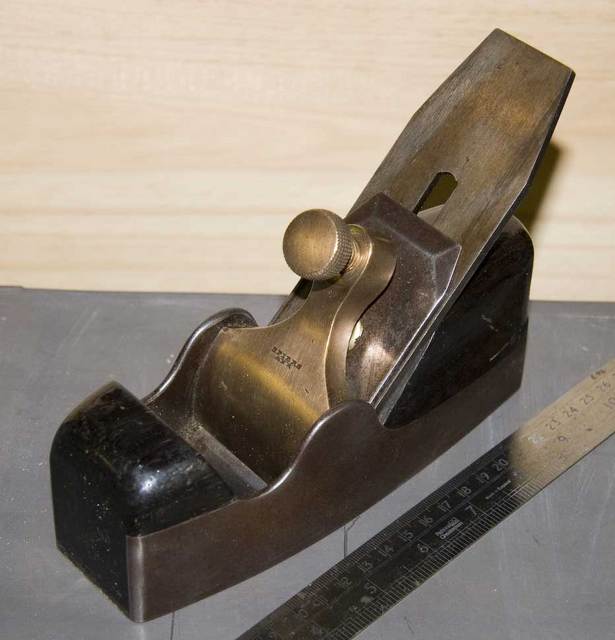Aled Dafis
Established Member
I was at a family gathering yesterday, and after a good few hours at the pub, we retired to my wife's uncle's house for a few nibbles and a cup of tea - which soon turned into more wine 
While we were there, my wife's uncle told me he had been given some old tools, and took me into the garage to show off his battered old chisels, and a few planes, much to my surprise he pulled out this little beauty from the bottom of a cardboard box :shock: :shock:

To cut a long story short, he said that I could have the plane if I bought him back a standard plane that he could use to adjust the odd door now and again.:roll: :roll:
As you can see from these pictures, theres a little surface rust all over the plane and iron, so what's the best way of dealing with it? How about lapping on wet & dry, or is that going to damage it forever - I have quite a large surface table at school that I could use.
The infill looks in good shape, so that can be left alone. How do I protect this when cleaning up the metalwork?




Can anyone tell me more about the plane, I gather from my Murlands tool value guide, that Spiers traded between around 1840 and 1936. I also found a picture of a similar plane on the web that pointed towards 1850-1860, is this accurate?
Not that I'm that concerned about the actual value as I fully intend to hang on to this plane, but my tool value guide points to £400 to £800 :shock: is this also in the right ball park?
Any info would be much appreciated, especially as regards to renovating.
Thanks in advance
Aled
While we were there, my wife's uncle told me he had been given some old tools, and took me into the garage to show off his battered old chisels, and a few planes, much to my surprise he pulled out this little beauty from the bottom of a cardboard box :shock: :shock:

To cut a long story short, he said that I could have the plane if I bought him back a standard plane that he could use to adjust the odd door now and again.:roll: :roll:
As you can see from these pictures, theres a little surface rust all over the plane and iron, so what's the best way of dealing with it? How about lapping on wet & dry, or is that going to damage it forever - I have quite a large surface table at school that I could use.
The infill looks in good shape, so that can be left alone. How do I protect this when cleaning up the metalwork?




Can anyone tell me more about the plane, I gather from my Murlands tool value guide, that Spiers traded between around 1840 and 1936. I also found a picture of a similar plane on the web that pointed towards 1850-1860, is this accurate?
Not that I'm that concerned about the actual value as I fully intend to hang on to this plane, but my tool value guide points to £400 to £800 :shock: is this also in the right ball park?
Any info would be much appreciated, especially as regards to renovating.
Thanks in advance
Aled





